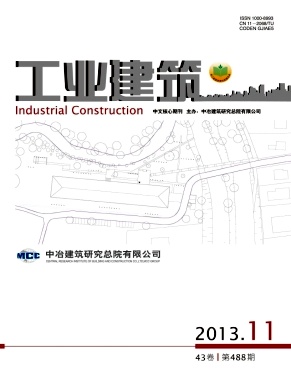|
周荣军, 赖敏, 余桦, 等. 汶川 Ms8. 0 地震四川及邻区数字强震台网记录[J]. 岩石力学与工程学报, 2010, 29(9):1850-1858.
|
|
[2] 舒优良. 汶川 8. 0 级地震陕西强震台网数据记录的初步分析[J]. 灾害学, 2008, 23(S1):125-132.
|
|
[3] 张冬丽, 徐锡伟, 周正华, 等. 汶川 Ms8. 0 级地震强震记录所揭示的地震断层特征分析[J]. 地学前缘,2010, 17(5):33-42.
|
|
[4] 朱珊, 尹新生. 反应谱理论及其应用[J]. 山西建筑, 2007, 33(9):78-79.
|
|
[5] 哈莉娅 达力列汗. 反应谱及其发展方向的探讨[J]. 工业建筑, 2005, 35(5):50-53.
|
|
[6] 钱胜国, 张练, 卢波. 地震动反应谱时程变化特性研究[J]. 水力发电学报, 2009, 28(5):14-18.
|
|
[7] 杨伟,欧进萍. 结构地震弹塑性反应谱损伤谱[J]. 地震工程与工程振动, 2008, 28(6): 44-53.
|
|
[8] 薄景山, 李秀领, 李山有. 场地条件对地震动影响研究的若干进展[J]. 世界地震工程, 2003, 19(2):11-15.
|
|
[9] 吴健, 高孟潭. 场地相关设计反应谱特征周期的统计分析[J]. 中国地震, 2004, 20(3):263-268.
|
|
[10] 郭明珠, 陈厚群. 场地类别划分与抗震设计反应谱的讨论[J]. 世界地震工程, 2003, 19(2):108-111.
|
|
[11] 李广军, 赵艳, 王文仲, 等. 场地条件对设计反应谱最大值的影响[J]. 工程抗震与加固改造, 2009, 31(1):114-118.
|
|
[12] 郭恩, 郭永刚. 场地类别划分与抗震设计反应谱的研究[J].山西建筑, 2007, 33(32):16-17.
|
|
[13] 周锡元, 齐微, 徐平, 等. 震级、 震中距和场地条件对反应谱特性影响的统计分析[J]. 北京工业大学学报, 2006, 32(2):97-103.
|
|
[14] Parolai,S,Bindi,D,Baumbach,M. et al. Comparison ofDifferent Site Response Estimation Techniques Using Aftershocksof the 1999 Izmit Erathquake. Bull[J]. Seism. Soc. Amer,2004, 94 (3):1096-1108.
|
|
[15] 姚久纲, 李鸿晶, 刘明才. 基于强震记录的建筑结构动力特性的初步识别[J]. 南京工业大学学报, 2005, 27(6):37-40.
|


 Login
Login Register
Register E-alert
E-alert







 DownLoad:
DownLoad: